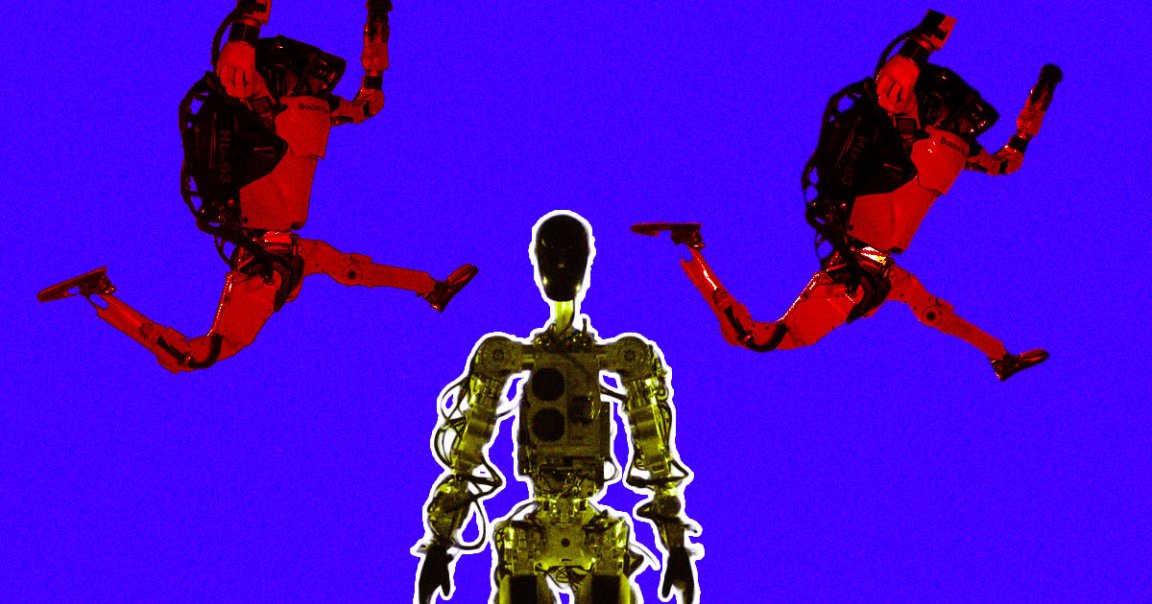
At Tesla’s artificial intelligence event on Friday, the company showed off two early prototypes of its Optimus humanoid robot, a walking automaton meant to take care of the “boring” tasks in life.
Perhaps as expected, what the company unveiled on stage was far from impressive — especially considering just how far ahead the competition is.
The first robot, a “rough development” model dubbed Bumble C, awkwardly shuffled onto the stage with its wires and electronics exposed.
Tesla CEO Elon Musk also unveiled a next-generation version, which had to be carried onstage because, he said, “we just didn’t want it to fall on its face.”
In short, the demos were of a very early-stage product, especially compared to its competitors that have been working on humanoid robotics for much longer.
Take Boston Dynamics’ Atlas for instance, a robot that can bust impressive dance moves, do parkour, and even backflip off a platform.

Sorry, folks — but after watching that robotic wizardry, take a gander at Tesla’s attempt. It’d be an impressive student project, but for now, it looks more like something you’d buy on Alibaba than a serious research project.

Sure, Tesla has come a long way in a relatively brief period of time — “Elon Musk speedruns robotics 101,” The Verge wrote — but that doesn’t make the car company’s flashy event last week particularly impressive.
Critics were quick to point out Optimus’ shortcomings. AI researcher Filip Piekniewski called the demo “next level cringeworthy. Complete and utter scam.”
“None of this is cutting edge,” robotics expert Cynthia Yeung tweeted . “Hire some PhDs and go to some robotics conferences Tesla.”
Others stopped short of ridiculing the company.
“Am I blown away? No,” Christian Hubicki, robotics professor at Florida State University wrote . “Am I laughing? No.”
Hubicki argued that Tesla is likely relying on a decades old walking method in robotics, forcing the robot to slowly shift its balance from one foot to the next in a semi-crouched position.
“They are very similar in concept to Honda’s Asimo robots, the development of which is now abandoned,” Will Jackson, CEO of Engineered Arts, the company behind that robot with eerily human facial expressions, told The Verge. “The overall design is heavily built, clumsy and power inefficient — the hands are very basic, the only redeeming feature is a clutch mechanism in the finger actuation.”
Those kinds of criticisms echo sentiments from experts after Musk’s brain computer interface startup Neuralink showed off a monkey playing a game of ping pong with its mind — a demonstration that experts called “outdated” and “not exactly new.“
Musk’s penchant for hyperbole doesn’t exactly help. As he’s done many times before, he offered up some hard-to-believe numbers on Friday.
According to the billionaire, a production-ready Optimus will go on sale for “much less than a car — much less than $20,000” and “within three years, probably not more than five years.”
Sure, Tesla has come some way since having a dancer in a spandex suit masquerade as a humanoid robot on stage just over a year ago.
But given Musk’s abysmal track record when it comes to his predictions — he originally promised that Tesla would be selling the robot by next year — we’ll believe it when we see it.
READ MORE: Experts’ judgment on the much-hyped Tesla Bot: Elon Musk speedruns robotics 101 [The Verge]
More on Optimus: As Deadline Looms, Elon Musk Re-Assigns Autopilot Team to Humanoid Robot